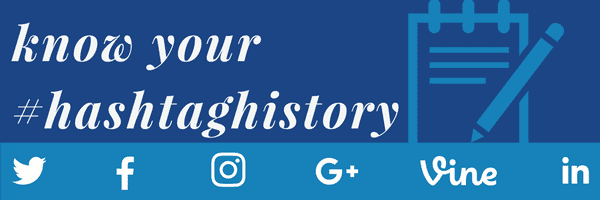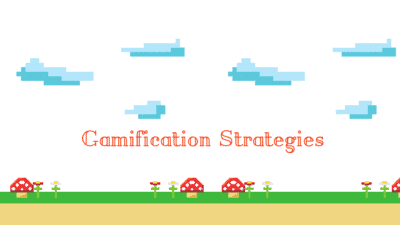Know Your Hashtag History

Sure, you use hashtags daily. You might even speak in hashtags (ironically, of course). But do you know the details of how the hashtag was born and evolved over time? If you’re going to make it as a social media marketer, it’s important that you know your hashtag history.
The beginning
Chris Messina is the inventor of the hashtag. He tweeted the first hashtag in 2007. He was employed at Twitter at the time and had the idea to use the pound sign to group conversations together concerning a specific conference they were attending. And that’s why the first hashtag is #barcamp.
how do you feel about using # (pound) for groups. As in #barcamp [msg]?
— Chris Messina (@chrismessina) August 23, 2007
Originally, Twitter was going to use machine learning to group like tweets together. In fact, Twitter founder Evan Williams thought hashtags were too “nerdy” to go mainstream because of where the idea originated. The concept of using the pound sign came from chat tags in Internet Relay Chats (IRCs). In an IRC, the pound sign is used to note the topic of a specific channel, and anyone can join a channel by using the pound sign at the front of a channel name (/join #DemandZEN).
Messina was in favor of implementing the hashtag because it is flexible and ephemeral. If spammers ever got ahold of it, members of the original group could simply create a new hashtag and start over. We have since witnessed multiple occasions where hashtags have transformed in meaning or been hijacked by other groups (sometimes referred to as “bashtagging”). Original users can then abandon the hashtag or create new hashtags in response.
A positive example of hashtag hijacking
In 2011, an employee of the American Red Cross accidentally tweeted this personal message to the Red Cross Twitter account. While the Red Cross deleted the tweet, the brewery Dogfish Head actually used the hashtag to change the conversation and encourage their followers to make donations to the Red Cross. The American Red Cross even poked fun at themselves in response to the mistake. Both parties used an unlikely hashtag to turn what could have been a social media nightmare into a marketing win.
We’ve deleted the rogue tweet but rest assured the Red Cross is sober and we’ve confiscated the keys.
— American Red Cross (@RedCross) February 16, 2011
Stowe Boyd’s contribution
Messina gets credit for the invention of the hashtag, but his coworker at the time, Stowe Boyd, gets credit for naming it. Boyd wrote a blog post outlining Messina’s proposal for “hash tags” on Twitter.
“My sense is that tags in Twitter, as elsewhere, define shared experience of some kind, involving all those using the tag. And the use can be either actively putting a hash tag (like “#hashtag”) into a tweet, or more passively opting to follow a stream of tweets related to a tagged theme.” – Stowe Boyd, 2007
Boyd went on in his post to highlight how using hashtags is preferable to the idea of a closed group; hashtags increase the possibility of a true public community sharing thoughts on a single subject. His hope was that hashtags could allow people to find communities they want to join, instead of just being used for metadata. We’re pretty sure he got his wish.
Twitter embraces the hashtag
The first hashtag occurred in 2007, but Twitter didn’t officially embrace the idea until 2009. And that’s when it became big.
2009 is the year that Twitter hyperlinked hashtags. This meant no longer solely relying on a search function, but actually performing a search on a specific tag with the click of your mouse. Implementing this connected users to one another in a more impactful way. It also meant that hashtags in marketing were no longer optional, they were a serious tool that needed to be leveraged for campaigns to be successful.
This same year, Twitter introduced their trending topics. Trending topics monitor both popular hashtags and phrases, and trending hashtags allowed everyone to join the most popular conversations on Twitter at the moment.
Hashtags changed the game and influenced how Twitter would be used. It defined the platform in a way that was completely unintentional, and it spread like wildfire to the other social media platforms.
The hashtag moves to other platforms
Long before they were searchable or hyperlinked, Twitter’s hashtag trend popped up on Facebook. Even Facebook users who weren’t Twitter savvy embraced the hashtag. But it was in 2013 that Facebook finally got with the program and made hashtags both searchable and clickable on their platform. It’s a little hard to believe that Google+ introduced hashtags on their platform one entire year earlier than Facebook.
But the platforms that have come since the introduction of hashtags have made them part of the game. The best example is Instagram. Without hashtags, Instagram would not be the app everyone loves.
It was born in 2010, and it encouraged over-hashtagging from the beginning. Instagram allows users upwards of 30 tags in a post (not that we recommend that to our fellow marketers). As with any platform, users are able to find individuals posting similar content through a hashtag search. The difference here is hashtags on Instagram often provide the context for a photo, with little need for any additional descriptors. On other platforms, hashtags reiterate the main point of a post and can often be redundant.
Other platforms that have incorporated the hashtag are Vine, Youtube, Pinterest (to a degree), LinkedIn (sort of), and Flickr. It’s clear now that a social app is not a social app if you can’t use a hashtag on it.
Hashtags and advertising
It didn’t take very long for marketers to realize that hashtags are excellent tools for spreading brand awareness, reinforcing campaigns, and promoting content. Jumping on trending topics allows companies to be a part of a broader conversation. Using basic hashtags (#mondayblogs) that are used on a regular basis also allows for more visibility.
During his 2008 presidential campaign, Barack Obama’s #yeswecan slogan was shared on Twitter nearly 3,000 times. Social media, especially Facebook, had a huge impact on Obama’s 2008 campaign. His campaign spent over half a million dollars just on Facebook advertising in 2008, which at that point was unprecedented. However, while the hashtag was popular among Twitter users, Obama’s Twitter and Facebook accounts did not utilize the hashtag. It was popularized by supporters, and it showed the power of how a hashtag could be used.
In 2011, Audi became the first company to include a hashtag in a TV advertisement. Like most experimental TV advertisements, it aired during the Super Bowl. Viewers were to use the hashtag #progressls and the URL audi.us/ProgressIs for a chance to win a trip to Sonoma, California and a test-drive of the Audi R8.
The campaign was successful enough to spawn follow up campaigns based on the hashtag #WantAnR8. Audi was able to recognize early that pairing a hashtag with a social media campaign not only simplified contest entry for their customers, but created an easy way for them to sort through responses.
Conclusion
Social media is still evolving, but hashtags aren’t going anywhere. From humble beginnings, the hashtag has traveled across the internet to become a permanent part of our digital vocabulary. If you’re creating organic or paid social content for your business, it’s absolutely necessary that you bring hashtags to the table.
Still not sure where to start? Check out Hashtags: The Ultimate How-To Guide to see how you can elevate your social account with a hashtag strategy.
You Might Also Enjoy These Posts
Gamification Strategies: Badges in B2B Marketing
7 Reasons Why Relevant Data is Important to Your Organization
Welcome To DemandZEN
DemandZEN specializes in Account-Based Demand Generation and solving the challenges around finding, engaging and converting target accounts into real opportunities for B2B Technology and Services companies.



